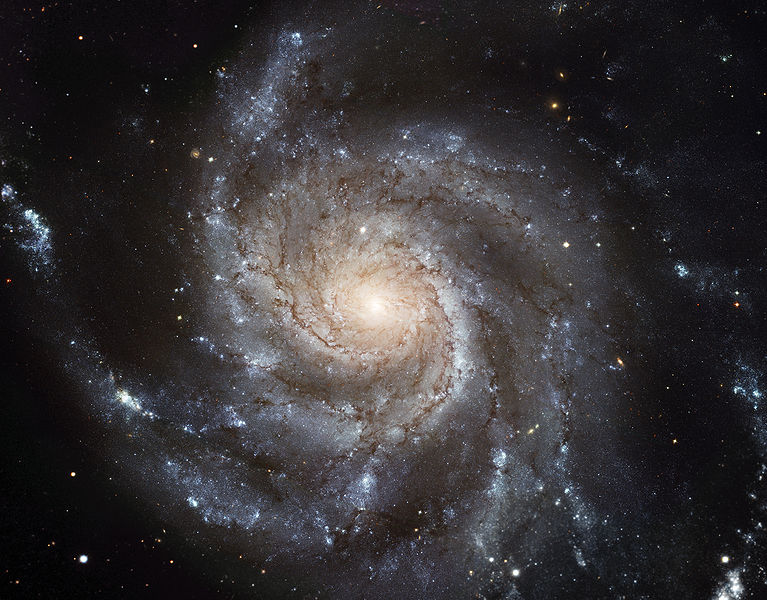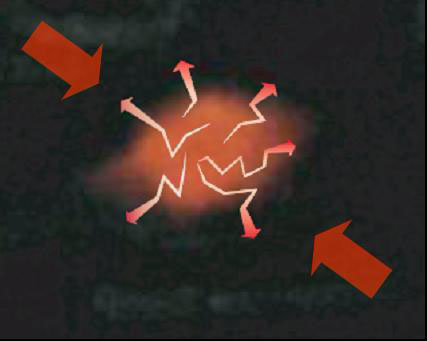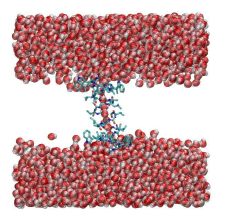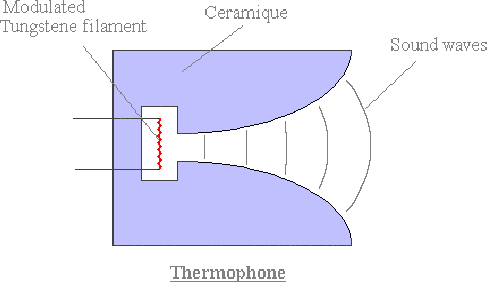Geckos and Tribology

Geckos are shown to walk on walls and ceilings because of millions of NPs that are detached by their toe-hairs. Each NP emits QED induced EM radiation from excess kT enrgy at the instant of detachment that by the photoelectric effect charges the geckos toe-hairs negative and the walls or ceiling positive. The geckos therefore are able to walk because of QED induced electrostatic attraction and have nothing to do with the commonly thought van der Walls attraction. Press Release Gecko NP and Spatulae Presentation
Gecko Update Prior gecko electrostatics was based on the premise that dust NPs are ubiquitous and attach to all surfaces. NP detachment by spatula was shown to produce EM radiation that by the photoelectric effect produced charge, thereby allowing the gecko to walk on walls and ceilings by electrostatic attraction. About 45 million <100 nm dust NPs were shown necessary to support the gecko weight. However, surface concentrations of dust NPs surfaces inferred from typical volumetric air concentrations suggest the necessary number of NPs may not be available to support the gecko. But dust NPs are not necessary because the more than 600 million spatulae need only contact the surface to induce electrostatic attraction. Unlike the dust NPs, the EM confinement of thermal kT energy of spatulae atoms occurs because the spatulae is surrounded by media of lower refractive index (RI). For the spatulae idealized by a thin circular disk centrally supported on the setae stalk, air surrounds the spatulae except for the inner spatualae diameter. The stalk is shown to have a lower RI making the spatulae interface act like a mirror to provide the EM confinement of the kT energy of spatulae atoms. Thermal kT energy is recovered as the spatulae attach to room surfaces while detachment induces the emission of VUV radiation that charges the spatulae. Repetitive attachment and detachment induces an electric field that attracts the spatulae (and the gecko) to the surface. Otherwise gecko electrostatics by spatulae follows that for dust NPs.Press Release
DNA damage and Cancer

NP induced DNA damage DNA damage induced by NPs is now considered to mimic that by conventional ionizing radiation, and therefore it is reasonable to hypothesize the NPs somehow produce EM radiations, at least beyond the UV. In fact, ionizing radiation from NPs at UV levels is consistent with the theory of QED induced EM radiation. By this theory, the NPs absorb low frequency thermal kT energy in collisions with surrounding solution molecules only to be induced by QED to be frequency up-converted to the EM frequency of the NP, usually beyond the UV. The EM confinement of the NPs is quasi-bound allowing the UV to leak into the surroundings. In cancer treatment, the UV induces necrosis, but there is a darkside. NPs have also been found to damage DNA and thereby increase the risk to forming new cancers. DNA damage is usually thought to be caused by reactive oxygen species (ROS) that in the NP oxidative stress paradigm correlates DNA damage with the large surface area of < 100 nm NPs. But this paradigm has recently been held in question by the greater DNA damage found with larger 300 - 1500 nm NPs. This is so, because QED induces the larger NPs to emit non-ionizing NIR radiation that is absorbed and enhances the UV from the <100 nm NPs above that produced by collisons alone. Cancer treatment by NPs therefore requires tuning the EM confinement frequency of the NPs to the absorption spectrum of the cancer while carefully avoiding that of the DNA. If not, the peripheral DNA damage in cancer treatment induced from NPs <100 nm only increases the risk of spreading the cancer. Given the ease by which NPs produce UV allows the conjecture is made that ALL cancers are most likely caused either by natural or man-made NPs. Government regulations of man-made NPs in commercial products is urged.PressRelease
DNA damage update The NP induced DNA damage was updated to for the Nanomed 2009 Conference later this year in Taiwan .See Paper and Presentation. Comparision with University of Bristol tests that claimed DNA was damaged across a barrier ScienceBlog For response to "Science Crackdown" in Discover Magazine, see Press Release, See also ASME Nanoengineering for Medicine and BIology Conference in 2010 for DNAdamage by signaling..
Cosmology by Cosmic Dust

Universe Expansion by Blackbody Radiation The Invisible Universe Conference proposed the new paradigm in cosmology that the expansion of the Universe based on the Hubble law applied to recent redshift measurements of Supenova light is caused by dark energy. But the measured Supernova redshift is unrelated to the expansion of the Universe because of cosmic dust, and therefore the Universe is not expanding because of dark energy. However, BB radiation is shown to cause Universe expansion, but at an imperceptible rate so that Einstein's original notion of a static Universe is most likely correct.See Paper
and Press Release
Dark Energy and Cosmic Dust In 1929, Hubble formulated the law that the redshift of spectral lines in galaxy light by Doppler’s effect suggested the expansion of the Universe. Today, astronomers contend Universe expansion is caused by dark energy.Indeed, the purpose of the Invisible Universe Conference is review dark energy as the basis for a new paradigm in cosmology. However, dark energy is moot if Hubble’s redshift is not caused by Universe expansion, but rather by cosmic dust particles (DPs). Given that supernova light is unequivocally absorbed by cosmic dust on its way to the Earth, the measured Hubble redshift Z is caused by DPs and has nothing to do with an expanding Universe. Hence, any implied relation of dark energy to an expanding Universe is not justified. Press Release Cosmic dust also holds in question the Hubble redshift as the first and only proof that the Universe began with the Big Bang suggesting the new cosmological paradigm adopted at the Invisible Universe Conference should be a return to Einstein’s notion of a static Universe in dynamic equilibrium.Presentation
Reddening and Redshift The effects of intergalactic dust on redshift measurements is important in proof of the expanding Universe. Recently, Universe Today reported intergalactic dust has "messed up" redshift calculations. Indeed, Comments to this article show Supernova light to be redshift in DPs and negate any expansion of the Universe implied by the Doppler effect in Hubble's law.
Casimir Force and Universe Expansion Both Casimir force and the force causing the expansion of the Universe have been thought for over half a century to be caused by the zero point field (ZPF) or dark energy that is the field equivalent of the zero point energy (ZPE) of atoms and molecules. An abstract of a paper is presented that shows the BB radiation from surface atoms produces the Casimir force and the atoms in submicron cosmic dust in the typical Universe is the reason for Universe expansion. In the latter, the expansion rate is very small suggesting the Universe is essentially static. More time is needed to complete the final paper.
Redshift by Cosmic Dust trumps Hubble and Tired Light Theories. In 1929, Hubble formulated a law that the velocity of a receding galaxy is proportional to its distance to the Earth. However, others thought the Hubble redshift was caused by mechanisms other than Universe expansion. Zwicky proposed that galaxy photons redshift because they lose energy upon collision with cosmic dust particles (DPs) over long distances before entering the Earth, a redshift theory called Tired Light. Recently, Ashmore extended Tired Light to loss of energy in galaxy photons upon collisions with electrons. In contrast, QED induced redshift is based on the absorption of the galaxy photon in DPs and not on scattering, and therefore images are not blurred. See ScienceBlog , BriefingWire and Press Release. Conclusions are:
1. Hubble redshift Z is caused by DPs and has nothing to do with an expanding Universe. DPs therefore make moot the existence of dark energy because it is no longer necessary in non-expanding Universe.
2. Tired Light theories based on scattering are likely to produce blurring of the object image. QED theory based on absorption and not based on scattering does not produce blurring.
3. Redshift in DPs is consistent with brightness measurements. The Tolman test for the static Universe should be revised to include the reduction in brightness by QED induced redshift in DPs.
4. QED theory based on redshift of DPs is consistent with the observed time dilation of Supernova light curves. Redshift in DPs is proportional to the total dust mass emitted in the Supernova explosion which in turn dilates the observed thermal decay time of high Z Supernova.
5. The vivid colors in ISM are the redshift of single UV photons absorbed in DPs similar to redshift of galaxy light first observed by Hubble. Continuous color variations in the ISM are caused by variations in DP size or diameter and less likely PL from the chemical composition of the DPs.
Cosmic Microwave Background Radiation (CMBR) is shown produced from collapsing galaxies instead of the Big Bang. The Sunayev-Zeldovich Effect (SZE) showing the CMBR is identical to the emission from collapsing cluster galaxies is proof the cluster galaxies are the source of the CMBR long thought produced by the Big Bang. The SZE shows the CMBR is virtually identical to the microwave emission from cluster galaxy collapse from 20 to 1000 GHz, and therefore it is reasonable to conclude that the cluster galaxies throughout the Universe are continuously producing the CMBR long thought by astronomers to be the relic of the one-time Big Bang some 14 billion years ago.
QED induced redshift Z in cosmic dust particles (DPs) is applicable to both exploding Supernova (SN) and imploding cluster galaxies. Both emit optical and X-ray photons that are absorbed in DPs. The DPs may be in or near the explosions or implosions including those distantly disposed in the light path to the observer. The difference is only the SN produce DPs that are proportional to the dust emission of the SN explosions. See Science Blog In contrast, implosive cluster galaxy collapse does not produce DPs because temperatures in excess of 108 K preclude any dust formation. The Z in collapsing clusters is therefore independent of the SZE intensity because the absorption QED induced redshift of optical and X-ray photons takes place in DPs removed from the collapse that are still in the light path to the observer.
The CMBR as the relic of the Big Bang can only be correct if the SZE showed a significant increase or decrease relative to the background CMBR. Thermalization of galaxy collapse emission takes place locally to temperatues of about 2.7 K. Other cluster galaxies find their own local equilibrium temperature, but on average the Universe acquires the temperature of 2.7216 K.However, confirmation requires the SZ Array to show the SZE is uniform and small throughout the Universe. Significant increases or decreases in the SZE support the Big Bang as the source of the CMBR. If not, collapsing cluster galaxies producing small but different SZE may only need support from the argument that the averate equilibvrium temperatues of cluster galaxies throughout the Universe have approached overall thermal equilibrium at 2.7216 K. See Press Release and Science Blog
Cosmic dust and Galaxy Rotation Curves
Similar to light from receding galaxies and Supernovae explosions, astronomers use the Doppler shift of light from different parts of a spiral galaxy to determine rotation velocities. In the plane of rotation, the galaxy is described by spiral arms of stars emanating from the galactic center while the edge view shows a bulge at the center of a thin disk. Galaxy rotation consists of half of the disk moving away from us leaving a trailing cloud of DPs in the light path to us. However, there are almost no DPs present in the half moving toward us. Our view of a rotating galaxy is therefore altered by an asymmetric cloud of DPs.
Light from the galaxy passing through the asymmetric cloud of DPs undergoes more QED induced redshift on the half moving away than the half moving toward us. Away from the galaxy, the DPs in the light path to us induce the same QED redshift for both halves of the disk, but compared to the cloud of trailing DPs may be neglected. The asymmetry in QED induced redshift if interpreted as a Doppler shift suggests the galaxy is rotating faster than it actually is. Since the trailing cloud of DPs is always present at any distance from the galactic center, the galaxy rotation appears to be flat with distance. By QED induced redshift, the galaxy rotation problem is resolved by ignoring the Doppler shift allowing the dynamics of spiral galaxies to be governed by Newtonian mechanics. Press Release and Science Blog
Cosmic dust questions period-luminosity relation in Cepheid stars The Cepheid period-luminosity relation that stars with long periods are brighter than those with short periods including measurements of the distance to the star based on the Baade-Wesselink method are placed in question by cosmic dust. Baade-Wesselink assumes redshift in spectral lines is caused by the radial veloctiy of the star surface, but the redshift is more likely proportion to the concentratin of DPs in the mass ejected. Press Release amd Science Blog
Casimir Effect

Casimir Recent experiments at Harvard suggested the Casimir force can be changed from attractive to repulsive by immersing the gold sphere and silicon plate in bromobenzene. See Nature The difficulty with this suggestion is that the Casimir force does not exist to be even be allowed to change to a repulsive force. Casimir never conserved the EM radiation in the gap between the plates which then requires the EM energy to remain constant as the gap changes, and therefore the Casimir force given by the gradient of the EM energy vanishes. The forces being measured in Casimir experiments are electrostatic caused by VUV radiation from QED induced EM radiation. In effect, the thermal BB radiaiton is frequency up-converted to VUV levels as the gap decreases below 0.1 microns. At VUV levels, the plates are charged by the photoelectirc effect. Press Release Since bromobenzene is an electron scavenger, the Harvard researchers should look for electrons or signatures thereof in the bromobenzene that would prove the Casimir force is not a neutral force but rather electrostatic.
Nanofluids and Thin Films

Nanofluid Update The WSEAS 2008 presentation showing the thermal conduictivity of nanofluids is not increase above that given by the HC mixing rules was updated for the ASME (MNHMT 2009) in Shanghai. See Paper and Presentation.
Thin Films Currently, experimental data on the thermal response of thin films to Joule heating is interpreted by reduced thermal conducivity. The Fourier theory is claimed not applicable, and instead the lattice Boltzmann method (LBM) is used to derive the thermal response. However, the reduction in conductivity is only apparent. Press Release Indeed, QED induced EM radiation predicts the film to emit EM radiation, thereby allowing the experimental data to be explained by conductive heat flow based on Fourrier theory using bulk thermal conductivity. Presentation
Molecular Dynamics

Molecular Dynamics in Submicron Structures In the 1950s, Metropolis and Teller pioneered molecular dynamics (MD) as a method to derive the thermodynamic and transport properties of bulk molecular liquids. Submicron ensembles comprising a few hundred atoms with periodic boundary conditions were used to derive the bulk liquid properties. Even though the ensembles were submicron, the periodic boundary conditions allowed the heat capacity of the atom at wavelengths longer than the dimensions of the ensemble to be included in the MD simulations. Today, MD simulations have been extended almost entirely to discrete submicron structures. The implicit assumption in the later MD simulations was there is no difference between the thermal heat capacity of the atoms in the discrete submicron structures and those ensembles in MD simulations with periodic boundary conditions. However, quantum mechanics (QM) as embodied in the Einstein-Hopf relation shows the thermal heat capacity of the atom as given by the Planck energy of the harmonic oscillator depends on dispersion with wavelength. At ambient temperature, most of the thermal heat capacity of the atom is available at wavelengths > 100 microns where the thermal kT energy is about 25.8 meV. However, the thermal emission from atoms in submicron structures is confined to wavelengths < 1 micron, and therefore excludes almost all of the heat capacity of the atom. Alternatively, atoms in discrete submicron structures in MD simulations lack the heat capacity necessary to conserve absorbed EM energy by an increase in temperature. MD simulations of discrete submicron ensembles may proceed as usual provided the QM restriction on the heat capacity of the atoms is properly simulated. One such method is the theory of QED induced radiations. Lacking the heat capacity to conserve absorbed EM energy by an increase in temperature, the absorbed EM energy is frequency up or down-converted by QED to the EM confinement frequency of the submicron structure. Subsequently, the absorbed EM energy is conserved by the emission of non-thermal EM radiation. See ScienceBlog and Press Release
Thermophones

Thermophones For over a century, thermophones have been thought act as a thermo-acoustic device converting an alternating current in a thin platinum strip to rapid temperature changes that cause the pressure oscillations in the surrounding air to produce sound. Recently, thermophones from nanoscale sheets of carbon nanotubes (CNTs) are claimed to Nano Letters Paper have far lower specific heat than platinum, and therefore more efficient in producing sound. But the CNTs having lower specific heat require more current than for platinum to produce the same temperature change and sound power. What this means is the temperature of the thin film has nothing to do with producing the sound. Paper Instead, the sound is explained the theory of QED induced EM radiation . Atoms in thin films are under EM confinement at levels beyond the UV-VIS that by quantum mechanics (QM) are restricted to zero specific heat, and therefore Joule heat cannot be conserved by an increase in temperature - this is a QM size effect independent of whether the film is platinum or CNTs. Instead, EM energy is conserved by prompt UV-VIS emission following QED induced up-conversion of low frequency Joule heat to the EM confinement frequency of the film. Without any increase in film temperature, the UV-VIS is directly absorbed by the surrounding air molecules. Although air absorption occurs at very low efficiency, the temperature and attendant pressure changes are sufficient to produce sound.Press Release and ScienceBlog
Peer Review

Blocking Publications Paper entitled "A Unified Theory of Electrification in Natural Processes" was refused publication because it was unsuitable for IEEE Transactions on Dielectric and and Electrical Insulation. See Paper
Reviewers were Prominent Scientists:
M. Zahn (MIT) and J. K. Nelson (RPI), USA
G. Touchard and H. Romat (Poitiers), France, and
J.S. Chang (McMasters), Canada.
The reason given for rejection:
"This paper is not acceptable for publication in its present form. This paper is a list of unconnected assertions without proof that the accepted theory of the electrical double layer has nothing to do with describing flow electrificaiton processes. To prove this the author uses a bunch of unrelated facts applied to nanoparticles from quantum electrodynamics, electromagnetic thermal energy, vacuum ultraviolet quantum mechanics, etc. Of the 23 references, 10 are by the author who refers to the reader to his own prior work for prood of his asertions. For this paper to be made acceptable for publication detailed rigoorous analysis is required showing where electrical double layer theory is incorrect and to provide convincing evidence of why the author's analysis is correct."
In rebuttal, the Author claims the refusal of publication is only self-serving to those Prominent Scientists having spent most of their careers in misdirecting their students and others in the area of Flow Electrification. See Press Release. In support of Author’s allegation that the electrical double layer (EDL) has nothing to with do Flow Electrification all said Prominent Scientists need to do is produce the detailed rigorous analysis showing the EDL to be correct. For over 20 years, the glaring lack of such evidence is convincing evidence the EDL is not correct.
Nanofluids inTransformers It is generally accepted that conductive particulate added to transformer oil lowers breakdown strength. Indeed, classical field theory shows sharp particulate surfaces locally enhance high electrical fields that initiate lower breakdown than for pure oils. It follows therefore if the particulate is comprised of submicron NPs, breakdown should be lower than for pure oil. However, experiments showed nanofluids comprising iron oxide NPs added to transformer oils increased the positive breakdown voltage and lowered positive streamer velocities. Recently, classical methods were used to explain the decade-old transformer data showing higher positive breakdown voltage and smaller streamer velocities for magnetite NPs in transformer oils. See Classical Methods in Analysis of Nanofluids in Transformers However, the classical method assumes the impossible condition that a NP is always located at the tip of the streamer that scavenges the fast electrons to produce slow moving negatively charged NPs that quench the positive breakdown. In contrast, QM treats the NP scavenging of fast electrons as a source of Joule heat that is conserved by the emission of VUV radiation. Unlike the fast electrons that induce collisional ionization at a single oil molecule in pure oils, the VUV in the nanofluid is distributed rather uniformly in the oil so that by the photoelectric effect electrons are dispersed throughout the oil, thereby reducing the tendency for positive streamers to form anywhere in the oil. Breakdown strength is therefore increased and streamer velocities are reduced. However, the NP induced VUV radiation leaves positive charged molecular oil fragments that produce free radicals that subsequently initiate breakdown. Indeed, the question may be asked if the NPs actually cause greater damage than if the pure oil without NPs. Long term testing is necessary to assess the benefits of NPs in transformer oils. Press Release